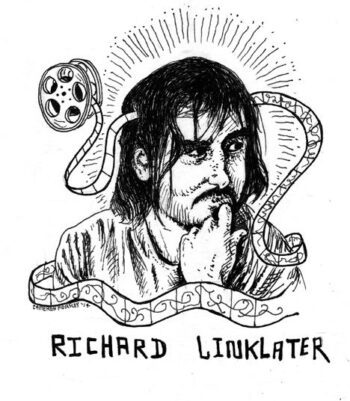
The 2014 San Francisco International Film Festival is underway and tonight is this year’s only event guaranteed to induce a boner. Let me clarify: the Bay Area’s queen of film criticism, Pauline Kael, suggested that all cinema, especially great cinema, has a sexual force inherent to it. While Bernardo Berolucci’s Last Tango in Paris (1973) may be the only film to fully express, as Kael wrote, this “primitive. . . thrusting, jabbing eroticism,” every great film is naturally sexy. And because tonight’s 7 p.m. event consists of an onstage interview with director Richard Linklater, followed by a screening of his new film, Boyhood, every San Francisco cinephile should be aroused enough to head to the Castro Theater—an aesthetic aphrodisiac in itself.
With the seventeen films preceding Boyhood, Linklater has put together a dynamic filmography that is unified by his distinct voice—a voice that has been echoing across the cultural landscape of this country for the past 25 years. He found this voice in 1991 Austin, Texas after scraping together $23,000 to film Slacker. By directing a rag-tag cast of local students and artists to act out their cinematic doppelgängers—anarchists, conspiracy theorists, lounge-lizards, and bar-bullies—Linklater broke down barriers. Arranged as a series of intermingling episodes where conversation and ideas overshadow action and plot, Slacker is, as far as I’m concerned, solely responsible for the independent film movement of ’90s America.
In one of the film’s episodes, a neo-Dostoevskian-coffeehouse-philosopher, hyped-up on what looks like an early version of the Frappuccino, offers this rhetorical question to his caffeine fiend friends: “Who’s ever written the great work about the immense effort required in order not to create?” And Linklater, true to his Slacker roots, has continually failed to put in the effort it takes not to create. In fact, in the two-and-a-half decades since Slacker, he has been as productive as a rabbit taking spring break on the lawns of the Viagra factory. Whether it was the near-perfect, coming-of-age tale Dazed and Confused (1993), the mind-bending, uniquely-rotoscoped Waking Life (2001), or the ‘Before’ trilogy—Before Sunrise (1995), Before Sunset (2004), and Before Midnight (2013)—which I believe is, when taken as a whole, the most honest and convincing love story to have ever graced the big screen, Linklater has put out on average a film a year.
Like any productive artist, the level of quality (or maybe I should say the level of genius) in Linklater’s films varies. Bad News Bears (2005) and Fast Food Nation (2006), for example, are what I’d call enjoyable duds. But even the duds succeed in what Linklater, the perpetual slacker, seems to have set out to do since he first started making films. . . or, rather, since he first watched Raging Bull (1980). “It made me see movies as a potential outlet for what I was thinking about and hoping to express,” he told Robert K. Elder in the documentary The Film That Changed My Life (2011). After re-watching most of his films, I’ve decided that what Linklater has long been “thinking about and hoping to express” is, above all, the directionless, existential reality of the human experience.
But instead of simply projecting to the big screen the bleak views offered by the Sartres and Nietzsches who obviously influenced him, Linklater presents the randomness of life as a gift to be treasured. It’s a refreshing, inspiring outlook. Whether it’s the post-adolescents hanging-out around a gas station’s dumpster in SubUrbia (1996) or the struggling musician disguising himself as a substitute teacher to pay the bills in School of Rock (2003), Linklater’s characters are, in spite of their turmoil, holy figures. They’re modern-day monks looking for meaning in a meaningless world—like all of us. And because of this existential holiness that pervades all of Linklater’s films, even his duds help advance his vision.
Boyhood (2014), which was filmed over a 12-year period, may be the film that completes his vision. It is without action, a plot, or any of the elements you’ve come to expect from a movie. It simply follows a little boy as he ages from 6 to 18. Because Linklater somehow managed to film the cast—Ellar Coltrane, Ethan Hawke, and Patricia Arquette—once a year every year starting in 2002, Boyhood promises to give viewers an entirely new perspective on the passage of time, on aging, and on life itself.
***
Featured illustration by Cameron Forsley.




